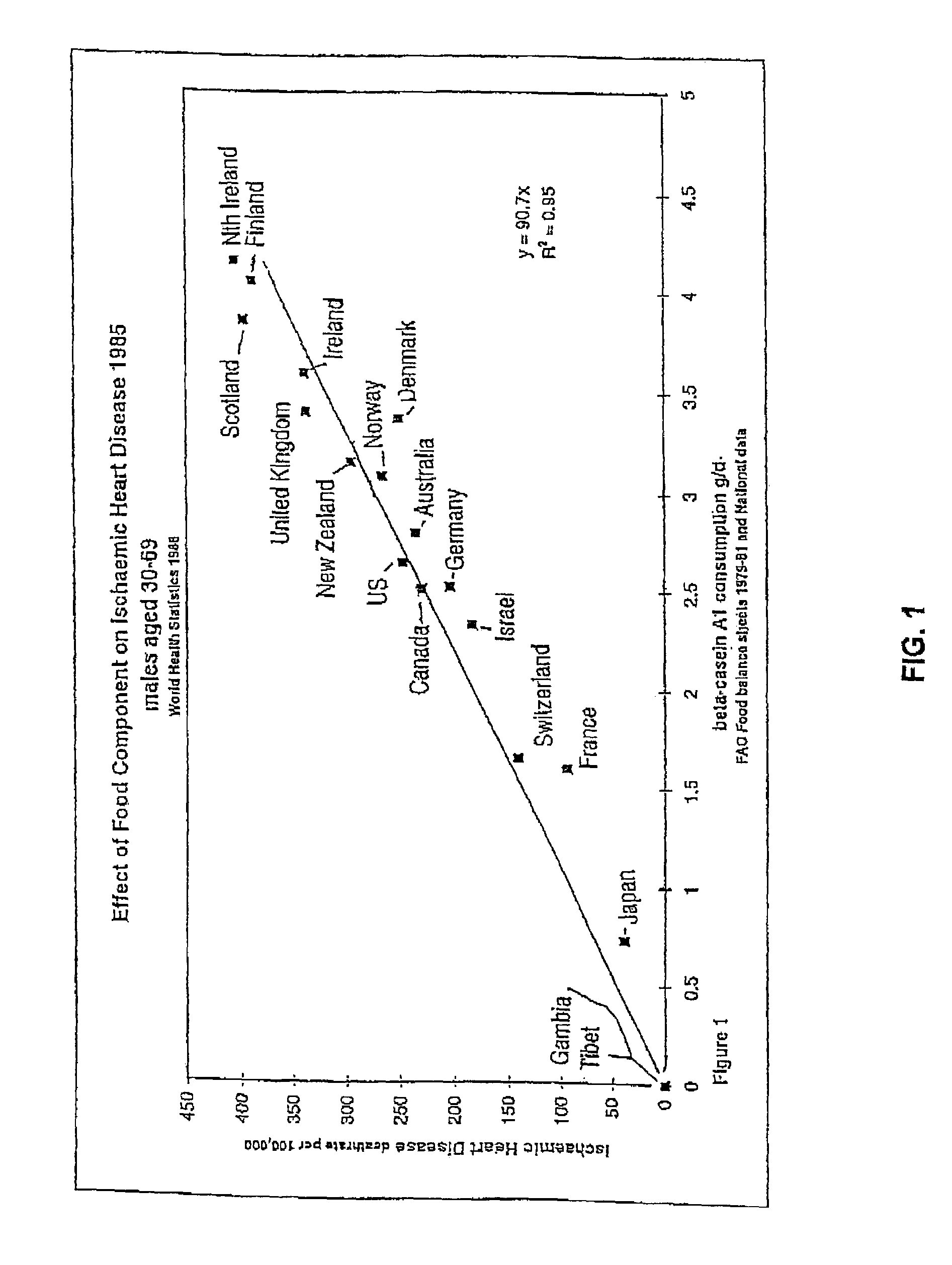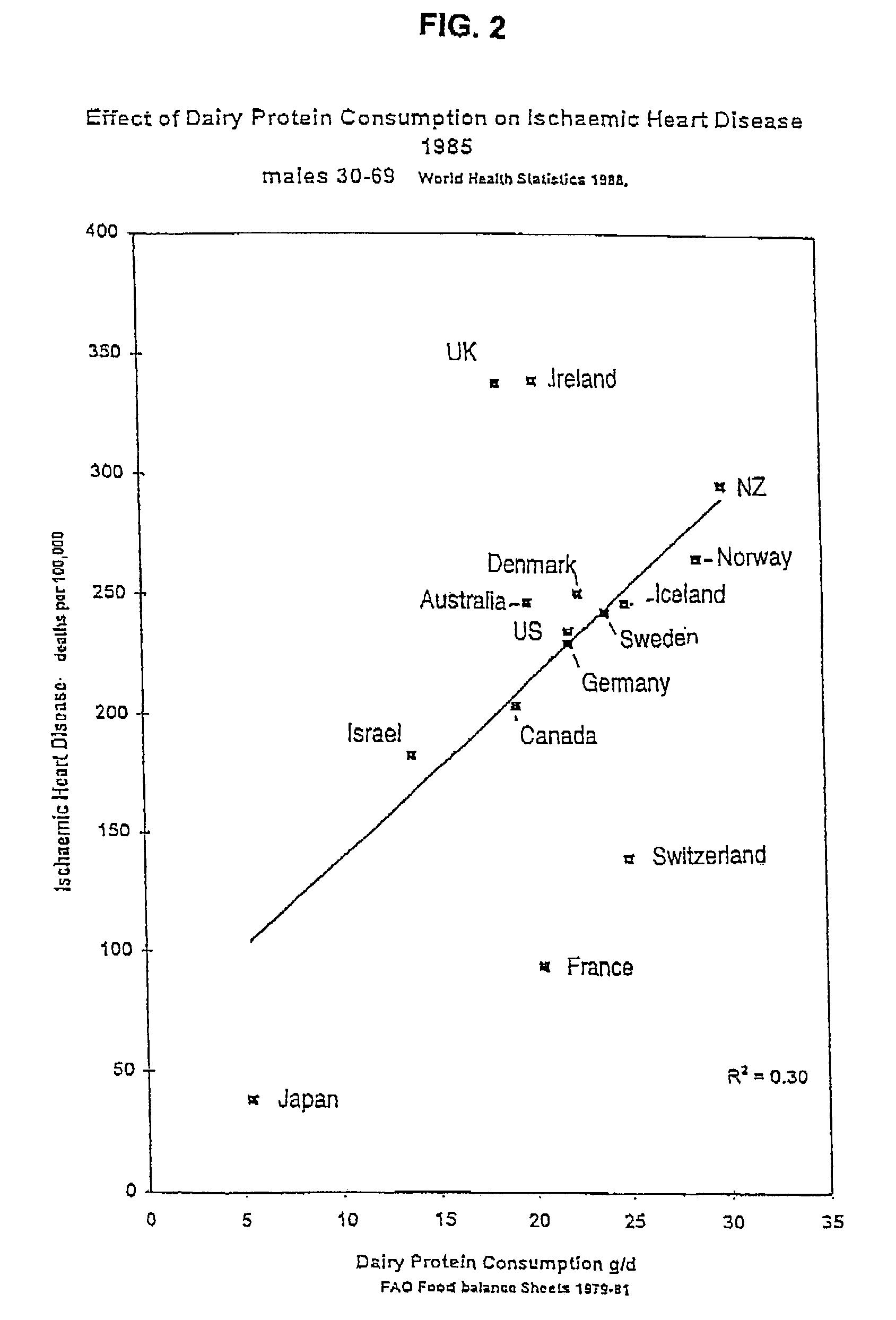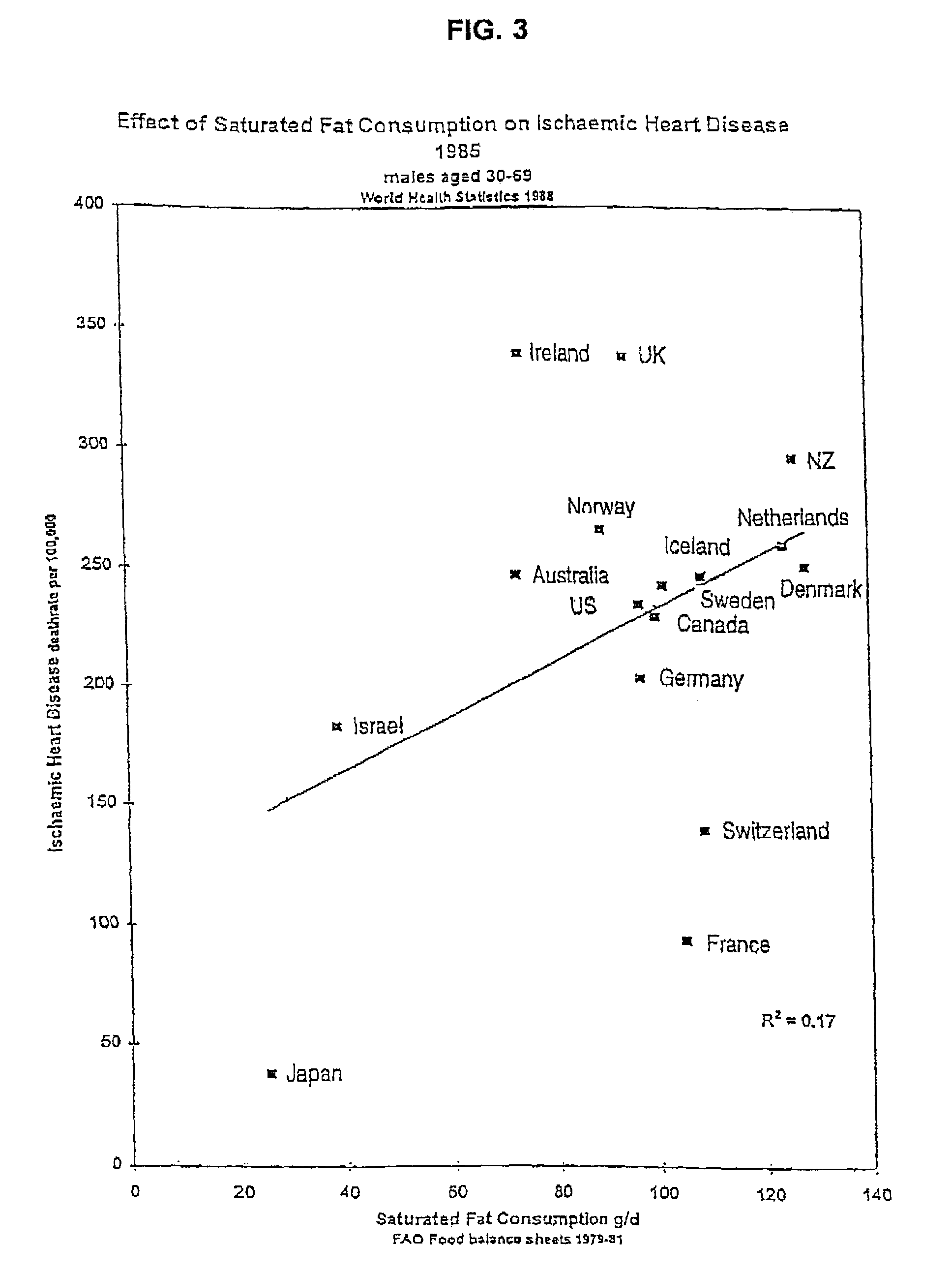Breeding and milking cows for milk free of β-casein A1
a technology of -casein and milk, which is applied in the field of milk free of -casein a1 protein, can solve the problems of coronary heart disease, additional risk factors found in some bovine milk unrelated to the fat content, and saturated fats found in milk are a risk factor for coronary heart diseas
- Summary
- Abstract
- Description
- Claims
- Application Information
AI Technical Summary
Benefits of technology
Problems solved by technology
Method used
Image
Examples
example 1
ACRS Method
[0172]At least 10 hairs were pulled from the end of the tail switch of a cow so that the hook-shaped follicles were retained on the end of the removed hairs. This was achieved easily by pulling the tail hairs upward while holding the rest of the switch down. If the tail has been docked, longer hairs from the end of the docked tail or other locations on the body may be substituted. Tail hairs are preferred.
[0173]Five hair follicles from one cow were cut into a sterile 1.5 ml microfuge tube. Solution A (200 μl) was added to the tube and the tube placed in a boiling water bath for 15 minutes. The tube was removed and Solution B (200 μl) added followed by mixing.[0174]Solution A (200 mM NaOH)[0175]Solution B (100 mM Tris-HCl, pH 8.5 with an extra 200 mM HCl)—prepared by combining 1 M Tris-HCl, pH 8.5 (10 ml) with conc. HCl (1.67 ml) and making up to 100 ml with distilled water.
[0176]Crude DNA extract (1.5 μl) from hair follicles (prepared as above) or DNA (20–50 ng) (prepared...
example 2
Primer Extension Method
[0190]DNA extracts from hair follicles were prepared using the method described in Example 1. Alternatively, genomic DNA isolated by other methods can be used at a concentration at about 2.5 ng / μl.
[0191]A DNA sample (1 μl) from each of 96 animals was placed into a 96 well PCR microtitre plate (or alternatively, from each of 384 animals into a 384 well PCR plate).
[0192]For the 96 well plate, a cocktail of the following reagents was prepared in a 1.5 ml microtube. The cocktail (4 μl) was added to each well in the plate with a repeating pipette.
[0193]
ReagentVolume μlWater (HPLC grade)22210x Hotstar Taq PCR buffer50containing 15 mM MgCl2HotStar Taq Polymerase (5 U / μl)425 mM MgCl220dNTP 25mM4Forward and reverse primer mix100Forward: actggattatggactcaaagatttg (SEQ ID NO: 7)Reverse: aaggtgcagattttcaacat (SEQ ID NO: 8)(1 μM each primer)
[0194]PCR was carried out using the following protocol:
[0195]
1 cycle:95° C. 15 minutes45 cycles:95° C. 20 seconds56° C. 30 seconds72°...
example 3
Rabbit Studies
Materials and Methods
[0206]Sixty New Zealand White / Lop cross rabbits of both sexes (16–24 weeks old) were obtained from the University of Queensland Central Animal Breeding House.
Protocol Summary
[0207]At time=0, the right carotid artery of all rabbits was balloon de-endothelialised. The rabbits were then randomly divided into 10 Groups and fed the specified diets for 6 weeks. Blood samples were taken at t=0, 3 and 6 weeks for analysis of serum constituents. At t=6 weeks, all animals were sacrificed and tissue samples taken. A summary of the study protocol is shown in Table 1.
[0208]
TABLE 5Protocol SummaryWeek0123456SurgeryXDietXXXXXXXXXXXXXXXXXXXXXXXXXXXXXXXXXXXXXXXXXXXXXXXXXBleedsXXXWeightsXXXXXXXSacrificeXSurgery at t = 0;study pellets distributed daily;blood collection at t = 0, 3, 6 weeks;weights recorded weekly;sacrifice at t = 6 weeks
[0209]At time=0, all 60 rabbits were anaesthetised with a mixture of ketamine (30 mg / kg) and xylazine (7 mg / kg) i.m. and main...
PUM
| Property | Measurement | Unit |
|---|---|---|
| Temperature | aaaaa | aaaaa |
| Temperature | aaaaa | aaaaa |
| Temperature | aaaaa | aaaaa |
Abstract
Description
Claims
Application Information
 Login to View More
Login to View More - R&D
- Intellectual Property
- Life Sciences
- Materials
- Tech Scout
- Unparalleled Data Quality
- Higher Quality Content
- 60% Fewer Hallucinations
Browse by: Latest US Patents, China's latest patents, Technical Efficacy Thesaurus, Application Domain, Technology Topic, Popular Technical Reports.
© 2025 PatSnap. All rights reserved.Legal|Privacy policy|Modern Slavery Act Transparency Statement|Sitemap|About US| Contact US: help@patsnap.com



